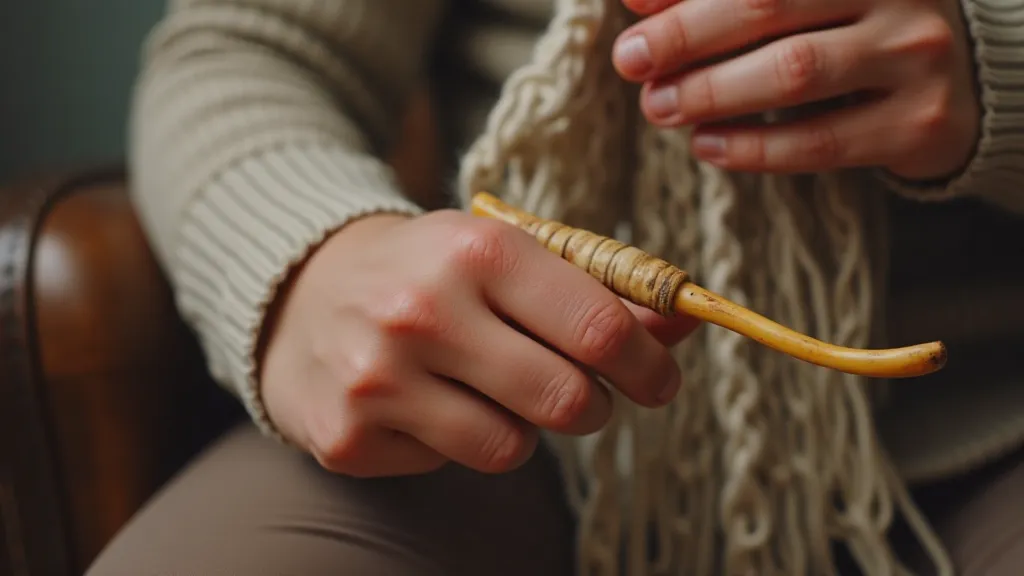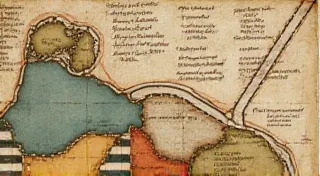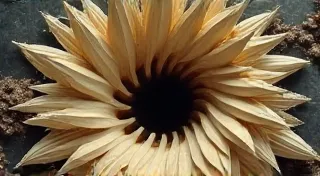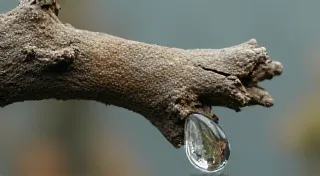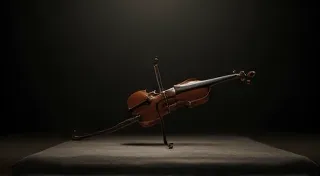From Bone to Beauty: The Aesthetics of Antique Knitting Tools
There's a quiet reverence that settles when you hold an antique knitting needle. It's more than just a tool; it's a tangible link to generations past, a silent witness to countless stitches and the stories woven into them. These aren't the sleek, mass-produced instruments we find in craft stores today. They are objects imbued with the spirit of their maker and the hands of those who wielded them. This isn’t merely about functionality; it's about aesthetics – the beauty born from necessity and honed by artistry.
My own fascination began with a small box inherited from my grandmother. Amongst the faded spools of thread and worn crochet hooks, lay a collection of bone knitting needles. They were surprisingly smooth, cool to the touch, and strangely comforting. I remember tracing the gentle curves, noticing the almost imperceptible widening near the tip, a subtle detail designed for better stitch grip. That initial moment sparked a deep curiosity, a desire to understand not just how these needles worked, but why they were made the way they were. It made me wonder about the history behind knitting itself, and the artistry of the early knitters - their challenges, their innovations, and the silent language of their craft.
The Materials of Memory: Bone, Ivory, and Wood
The most common material for antique knitting needles, particularly those from the 18th and 19th centuries, was bone. Human bone was occasionally used, though increasingly frowned upon as sensibilities shifted. Animal bone, primarily sheep and cattle, was the more prevalent choice. The beauty of bone needles lies in their inherent natural markings – the subtle grain and texture that tell a silent story of the animal's life. Ivory, a rarer and more luxurious option, offered a warmer, richer tone and a remarkable polish. Wood, in various types like ebony, rosewood, and boxwood, provided a different kind of warmth and character, often showcasing a more rustic appeal. Each material dictated the aesthetic possibilities – the potential for embellishment, the feel in the hand, the overall impression. The selection of a material was not arbitrary; it reflected not only available resources, but also cultural preferences and the intended purpose of the needles themselves. The evolution of these materials reflects a larger story of societal change and shifting values, and how those changes impacted the craft of knitting.
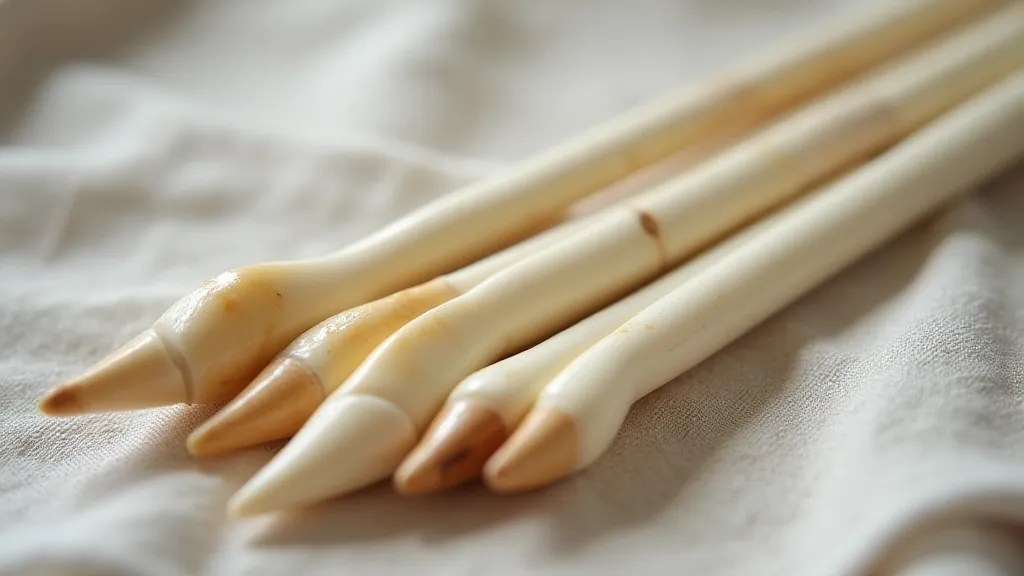
The Craft of the Carver: Shape and Form
Unlike modern knitting needles, which are often precisely manufactured, antique needles were largely carved by hand. This means each one possesses unique characteristics – slight variations in length, taper, and overall shape. The most common form was the long, slender point, ideal for fine yarns and intricate patterns. However, shorter, sturdier needles were used for heavier wools and cables. The tip itself is crucial; early needles often featured blunt points, gradually evolving to the sharper, more precise tips we recognize today. The widening near the tip, a deliberate design to prevent yarn slippage, speaks volumes about the craftsman’s understanding of the tool’s function and his dedication to usability. The slight rounding of the handle, worn smooth by years of use, provides a tactile connection to the past, a physical echo of countless hand movements. It’s fascinating to consider the deliberate choices made by these carvers, how they shaped the needles to suit the specific types of yarn and patterns popular at the time. The evolution of these designs, and how they reflected changing fashion trends, is a rich area of study; a subject almost deserving of its own exploration, perhaps something along the lines of how needles and the evolution of knitting designs have subtly and continuously intertwined.
Embellishments and Decoration: A Reflection of Status
While functionality was paramount, many antique knitting needles were also objects of considerable artistry. The level of embellishment often reflected the owner's status and the region's artistic traditions. Simpler bone needles might feature a hand-carved band around the handle, perhaps depicting stylized flowers or leaves. More elaborate ivory needles might be painstakingly engraved with intricate scenes – floral motifs, geometric patterns, or even miniature portraits. Some were inlaid with slivers of contrasting materials, creating a dazzling effect. These decorations weren't merely decorative; they were a form of personal expression, a testament to the maker's skill and the owner's appreciation for beauty. These were not merely tools; they were objects imbued with personal meaning and carefully chosen to reflect the owner's taste and social standing. The stories held within these decorations provide a unique window into the lives and aspirations of those who once used them.
I recall examining a pair of ivory needles at a flea market. They were relatively short, but the handles were exquisitely carved with tiny, intertwined roses. The detail was breathtaking, a miniature masterpiece in the palm of my hand. Knowing that someone had dedicated hours to such delicate work filled me with a sense of awe and respect. These intricate patterns weren't just decorative flourishes; they represented a level of skill and dedication that speaks volumes about the value placed on craftsmanship during that era.
Regional Variations and Style
Like any craft, knitting needle design varied geographically. Needles from Scandinavia often displayed a distinct simplicity, reflecting the region's emphasis on practicality and functionality. English needles tended to be more refined, showcasing a greater attention to detail. American needles, particularly those from the colonial era, often combined elements of both styles, reflecting the country's diverse cultural influences. Recognizing these regional nuances can provide valuable insights into the history of knitting and the cultural traditions associated with it. The subtle differences in design and materials used often reveal a fascinating interplay of local resources, cultural aesthetics, and trade routes. Understanding these variations is like piecing together a complex map of cultural exchange and artistic innovation. The geographic influences on needle design are complex, interwoven with broader historical trends – it's a tapestry that rewards closer inspection.
The Collector’s Eye: Condition and Rarity
Collecting antique knitting needles isn't just about acquiring beautiful objects; it's about preserving a piece of history. Condition plays a significant role in value, although signs of wear and use – the subtle scratches and worn patches – are often considered desirable, as they attest to the needle's history and authenticity. Rarity also influences value; needles made from ivory or embellished with intricate carvings are considerably more sought-after than simpler bone needles. However, the true value of these tools lies not in their monetary worth, but in the stories they tell – the echoes of generations past woven into their very being. The meticulous study of these needles – understanding their provenance, identifying regional characteristics, and assessing their condition – is a pursuit that blends historical research with an appreciation for exquisite craftsmanship.

Restoration and Preservation: Gentle Care for a Fragile Past
Restoration should always be approached with caution. The goal isn't to erase the needle’s history, but to stabilize its condition and prevent further deterioration. Gentle cleaning with a soft cloth and appropriate cleaning solutions can remove surface dirt and grime. Broken needles can sometimes be carefully repaired, but invasive techniques should be avoided. Ultimately, the best approach is to handle these delicate objects with respect and to provide them with a stable, protective environment. The challenge lies in balancing the desire to preserve these historical artifacts with the understanding that their beauty and value are inextricably linked to their story – a story often written in the subtle marks and imperfections of time.
More Than Just Tools
Antique knitting needles are more than just crafting tools; they are tangible links to the past, objects imbued with the spirit of generations past. Holding one evokes a sense of connection – to the artisans who crafted them, the knitters who used them, and the countless stories woven into the fabric of time. The echoes of these stories linger – whispers of family traditions, community gatherings, and individual expressions of creativity. The very act of holding an antique needle connects us to a lineage of makers and users, a shared heritage of skill and artistry. It’s a reminder that even the simplest tools can carry profound significance, and that the objects we create – and the objects we cherish – are interwoven with the larger narrative of human experience. The subtle variations in design and style often reveal the unique influences of various cultures, demonstrating how regional customs and traditions have shaped the craft of knitting over centuries. It’s as if each needle carries its own silent testimony to the passage of time, inviting us to listen closely and learn from the past. The preservation of these objects isn’t merely about safeguarding beautiful artifacts; it’s about preserving a vital part of our collective memory, ensuring that the legacy of hand-knitted beauty continues to inspire and endure. It’s quite a subject, actually – a whole world of history and artistry – a world where the threads of the past are meticulously preserved, just like the fading voices of knitters past.
